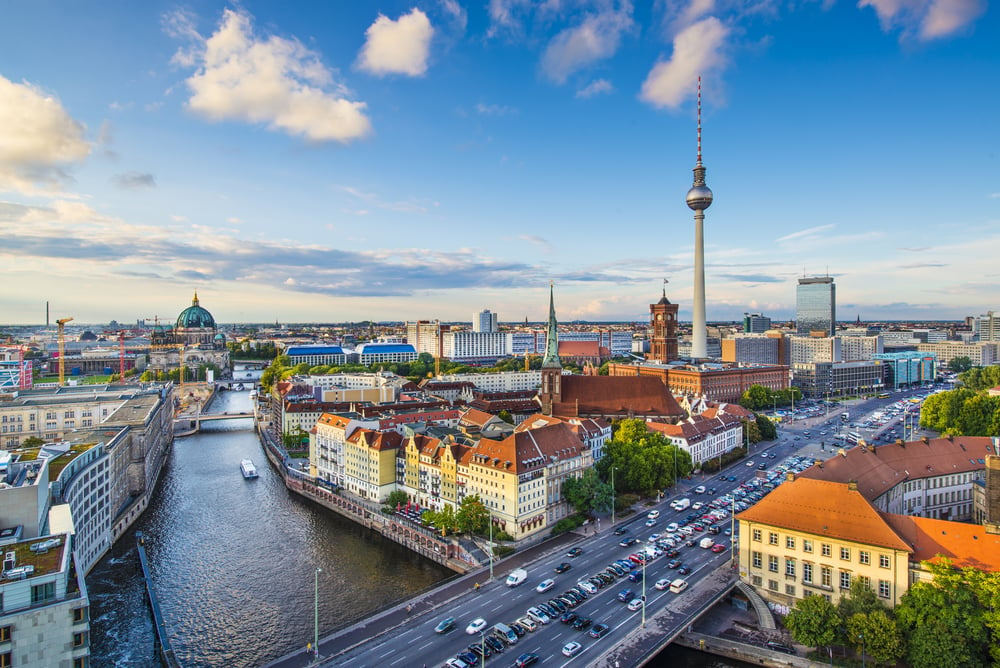Planning a one-day trip to Berlin from a cruise ship can be a daunting task—you have a limited amount of time and a lot to see. While many cruisers opt for expensive and restrictive shore excursions, this itinerary is designed for those who want to explore independently, saving money and enjoying more flexibility. I’ve crafted a guide that allows you to make every minute count without feeling rushed as you explore Berlin’s iconic landmarks and hidden gems at your own pace.
This itinerary is specifically designed for cruisers, taking into account the unique challenges and opportunities of a one-day port visit. From the moment you step off the ship, you’ll embark on a carefully curated journey through Berlin’s most iconic landmarks and historic sites. This guide focuses on a logical flow that minimizes travel time and maximizes your exposure to the city’s rich history and vibrant culture.
How do I get to Berlin from my cruise port?
Your ship will likely be docked in either Warnemünde or Rostock, Germany, which are both towns on the Baltic Sea. You have two main options for getting to Berlin: an excursion organized by your cruise line or an independent train journey. This guide focuses on the independent option, which offers more flexibility and is significantly more budget-friendly. The train ride is the most efficient and popular choice. The journey is long—expect it to be around 3 hours each way. This means you need to be highly efficient with your time in Berlin.
What you need to know about taking the train to Berlin
Arrival in Berlin: You will arrive at Berlin Hauptbahnhof (Berlin Hbf). This massive, multi-level station connects you directly to the city’s public transport network (S-Bahn and U-Bahn). From here, the city is at your fingertips!
Departure Station: The closest train station to the Warnemünde cruise port is Warnemünde Bahnhof, which is a very short and easy walk from the ship. If your ship is in Rostock, you’ll depart from Rostock Hauptbahnhof (Rostock Hbf).
National Train Service: You will be traveling with Deutsche Bahn (DB), Germany’s national train company.
Booking Your Tickets: I highly recommend booking your tickets in advance online through the official Deutsche Bahn website or a service like Trainline, which I mention in my essential travel apps post. Booking in advance can save you a significant amount of money compared to buying on the day you visit Berlin. For groups traveling together, look for a “Group Day Ticket” (Quer-durchs-Land-Ticket) or similar regional day passes, as these can be a great value.
Train Type: The trains that run this route are typically a combination of Regional Express (RE) and Intercity (IC) trains. While some trains may be direct, it’s common for the journey to require one transfer, often in Rostock. Don’t worry about transferring; it is typically very straightforward.
How to get to Berlin from Rostock
From Rostock Hbf, take a direct Deutsche Bahn (DB) train to Berlin Hbf. The journey typically takes just over two hours, and there are frequent services throughout the day.
How to get to Berlin from Warnemünde
Walk 10 minutes from your ship to the Warnemünde train station and take the S1 train (S-Bahn) to Rostock Hbf. Transfer at Rostock Hbf to a direct train to Berlin Hbf. Common trains for this route are the Regional Express 5 (RE5) or various Intercity (IC) trains.
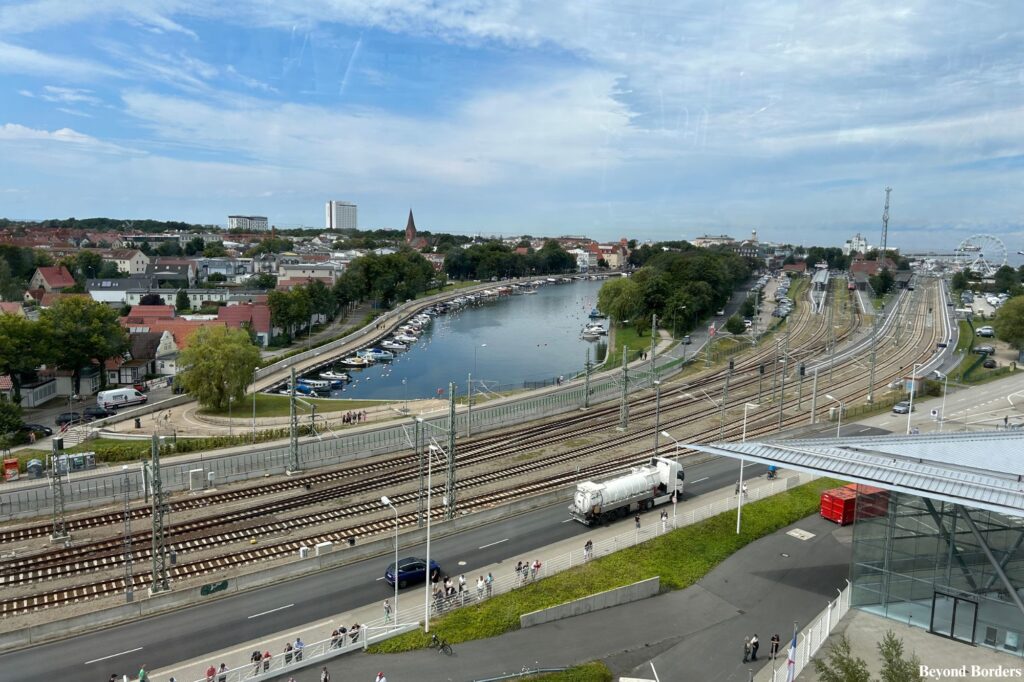
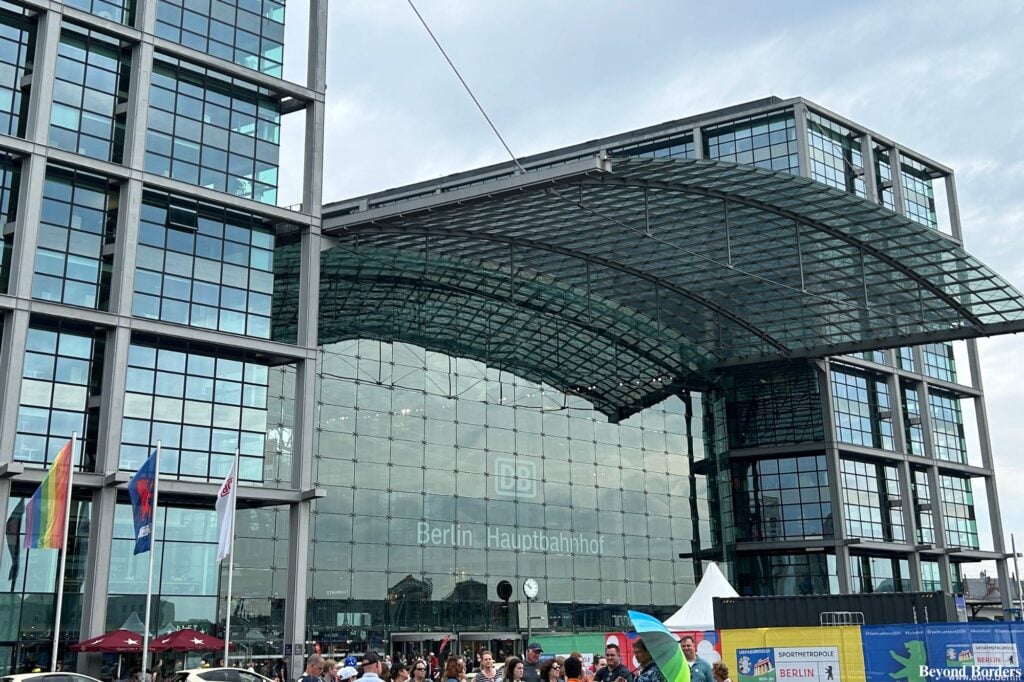
Using the Berlin Subway: U-Bahn
The U-Bahn (Untergrundbahn: “Underground Railway”) is Berlin’s subway/metro system. Its main purpose is to serve urban areas within the city limits. U-Bahn trains are typically bright yellow, and their logo is a white “U” on a blue background.
The U-Bahn offers day passes for visitors to Berlin, perfect for cruisers. A standard day pass for Berlin’s public transport system, which includes the U-Bahn, S-Bahn, buses, and trams, is called a 24-hour ticket. You have to buy a ticket from a ticket machine at a U-Bahn station or through the city’s public transport app (BVG Ticket-App); you cannot purchase a digital ticket online.
The most common ticket for visitors is for Zone AB, as it covers the entire city center, including all the major tourist attractions and most neighborhoods like Mitte, Kreuzberg, and Prenzlauer Berg. The price for a standard adult fare is €10.60 for an unlimited number of trips.
The ticket is valid for 24 hours from the moment you validate it, not for a calendar day. You must validate your ticket by stamping it in one of the small machines on the platform before you start your first journey. If you buy it from a bus or tram driver, it’s often already validated.
Early Morning: Embark on Your Journey to Berlin
Your day begins with a mission: catching the first possible train out of Warnemünde. Since you’ve already booked your tickets in advance through Deutsche Bahn (DB), all you need to do is make the short walk from your ship to Warnemünde Bahnhof and board the train. Be prepared for a long ride; the travel time is three hours each way, but it’s well worth the journey. Use this time to relax and enjoy the German countryside.
Late Morning: Arrival and Iconic Landmarks
Welcome to Berlin! You’ll arrive at the massive Berlin Hauptbahnhof (Berlin Hbf) train station, Berlin’s main transportation hub. This station is a modern marvel of glass and steel, unique for its multi-level design where trains cross on two different planes: some running on elevated tracks with a stunning glass roof, while others are deep underground.
More than just a station, it functions as a shopping center with over 80 shops, cafes, and restaurants. Its central location also puts you within walking distance of major landmarks like the Reichstag Building and the Brandenburg Gate, ensuring you’re ready to start exploring the moment you step off the train!
From Berlin Hbf, your first stop is the iconic Brandenburg Gate.
Brandenburg Gate
How to get to Brandenburg Gate from Berlin Hbf: Take the U-Bahn 5 train to the Brandenburger Tor station, and walk 2 minutes until you see the gate.
Brandenburg Gate, a neoclassical arch, is Berlin’s most famous landmark and a powerful symbol of German and European history that has witnessed centuries of pivotal events. Built between 1788 and 1791, the gate is one of the earliest examples of Neoclassical architecture in Germany.
Following World War II, the gate was between East and West Berlin, becoming a stark symbol of the city’s and the nation’s Cold War division. With the fall of the Berlin Wall in 1989, the gate was finally reopened to the public, transforming it into a powerful and enduring monument to German reunification and European peace. Today, it stands as a testament to the city’s journey from division to unity.
The Reichstag Building
How to get to the Reichstag Building: Make a right onto Bundesstraße 5/B2, and then make a left onto Scheidemannstraße. Make a right onto Platz d. Republik and the Reichstag Building will be on your right.
The Reichstag is a magnificent symbol of German democracy and is located right next to the Brandenburg Gate. While you can visit the glass dome and rooftop terrace for spectacular city views, this is not advised for cruise passengers on a self-guided day trip. A visit requires pre-booking a specific time slot weeks in advance, and even then, security checks can cause delays that you cannot afford. Instead, admire its impressive architecture and unique glass dome from the outside as you walk by. It’s a fantastic photo opportunity and saves you valuable time for other key sights.
Holocaust Memorial
Just a 10-minute walk away from the Reichstag Building and Brandenburg Gate is the powerful Holocaust Memorial (Memorial to the Murdered Jews of Europe).
How to get to the Holocaust Memorial from the Reichstag Building: Walk south on Platz d. Republik toward Scheidemannstraße and make a left onto Scheidemannstraße. Then, make a right onto Bundesstraße 5/Ebertstraße/B2. Next, make a left onto Hannah-Arendt-Straße. You will see the Holocaust Memorial on your left.
The Holocaust Memorial is an essential and poignant stop to visit. Its abstract design consists of 2,711 concrete slabs of varying heights set on an undulating, sloping field. As you walk through the narrow, maze-like passages, the ground shifts and the slabs grow taller, creating a disorienting and overwhelming experience that is meant to evoke a sense of unease and loss. The memorial is a deeply moving space for quiet reflection, and beneath it lies a free underground information center that provides personal stories, names, and historical context to ensure the victims of the Holocaust are not forgotten.
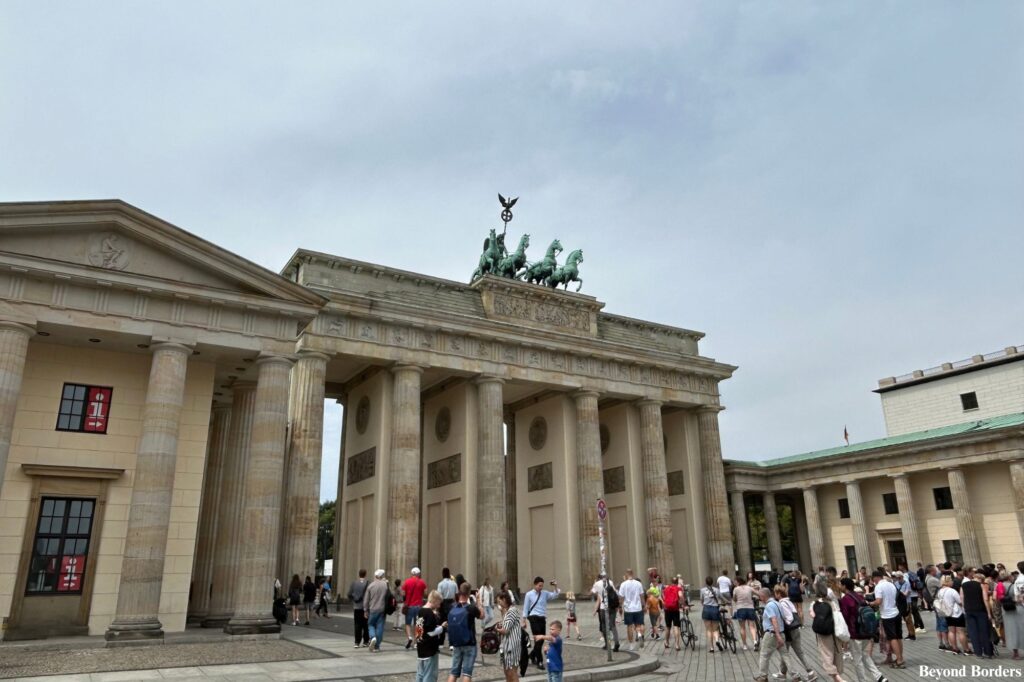
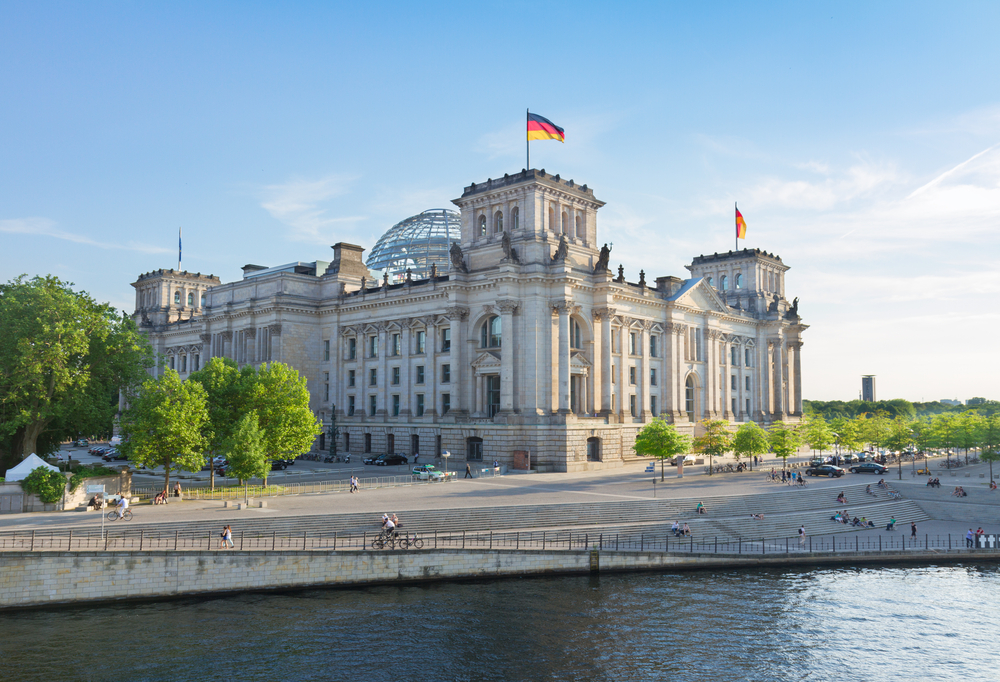
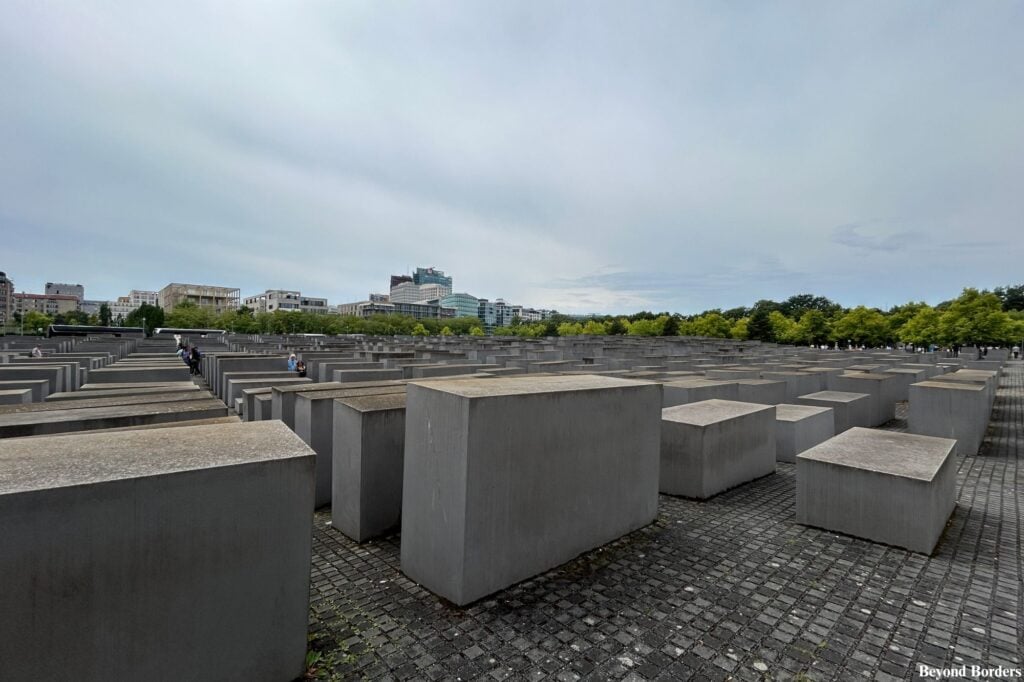
Lunch: An Authentic German Street Food Experience
After your visit to the Holocaust Memorial, grab a quick and authentic German street food lunch! This is a fast and authentic lunch that won’t eat into your limited time. The area around the Brandenburg Gate is more formal, so instead of trying to find a stand over there, take a quick detour to get a classic Currywurst or a delicious Döner Kebab.
One option is Curry at the Wall, a currywurst counter-serve restaurant that is a 15-minute walk from the Holocaust Memorial.
How to get here: Head east on Hannah-Arendt-Straße toward Cora-Berliner-Straße. Make a right onto Wilhelmstraße and then a left onto Zimmerstraße, and you will see the restaurant on your left.
Another option to eat close by is Teras, a Döner Kebab counter-serve restaurant that is an 8-minute walk from the Holocaust Memorial. This is a very popular spot known for authentic doner kebabs. It’s a “cult favorite” with locals and is known for serving high-quality food!
How to get here: Head east on Hannah-Arendt-Straße toward Cora-Berliner-Straße, and make a right onto Wilhelmstraße, and you will see the restaurant on your left.
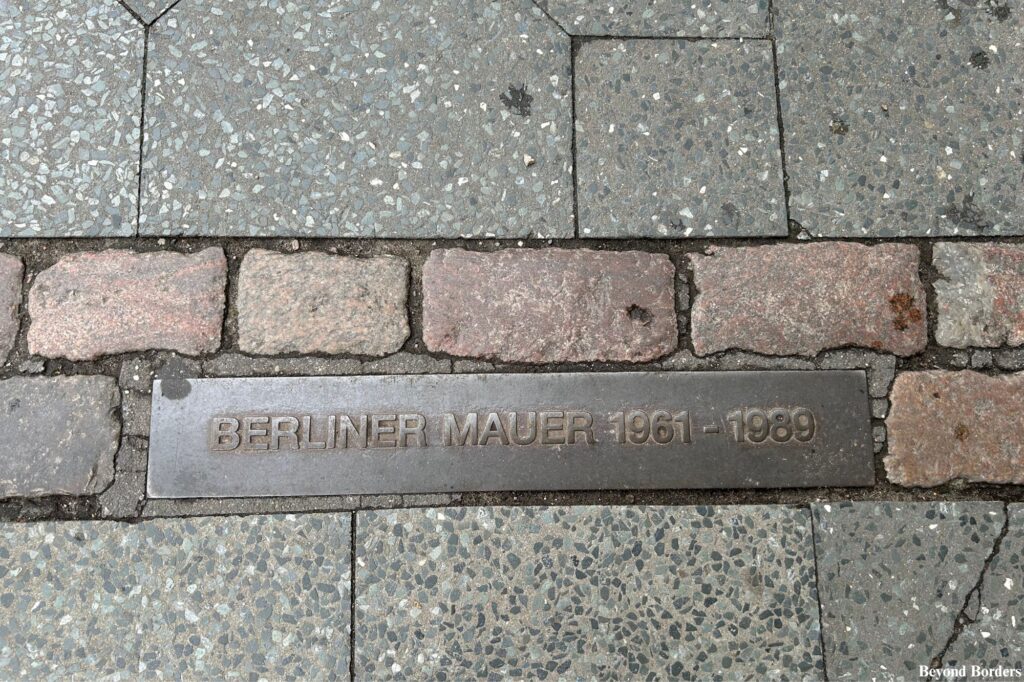
Early Afternoon: Cold War History or A Local Oasis
After a quick lunch, you choose what to do next, depending on your interests!
Option 1: Cold War History
After lunch, walk 10 minutes to visit Checkpoint Charlie. While it is very touristy, it’s a powerful and concise symbol of the Cold War division that is worth seeing.
How to get here from Curry at the Wall: Head east on Zimmerstraße and make a right onto Friedrichstraße, and you will see Checkpoint Charlie up ahead.
How to get here from Teras: Walk on Anton-Wilhelm-Amo-Str, toward Wilhelmstraße. Then, make a right onto Glinkastraße. Cross Leipziger Street onto Mauerstraße and make a slight right onto Friedrichstraße. You will see Checkpoint Charlie up ahead.
Checkpoint Charlie is one of Berlin’s most famous Cold War landmarks, symbolizing the former division of the city and the dramatic tensions between the American and Soviet sectors. It served as the most well-known border crossing point between East Berlin and West Berlin from 1961 to 1990.
Checkpoint Charlie was also the only crossing point for foreigners and Allied military personnel. The name “Charlie” comes from the third letter of the NATO phonetic alphabet (A, B, C) and was used by the Allies for their checkpoints on the East/West border. The most tense moment at the checkpoint occurred in 1961, when American and Soviet tanks faced off in a tense standoff.
Next, walk right next to Checkpoint Charlie to visit the Topography of Terror. This powerful museum is built on the actual site of the former Gestapo and SS headquarters, making its location uniquely significant. The free outdoor exhibit is very impactful, offering a chronological look at the Nazi regime’s rise to power and the institutions of terror it created.
The site also features a long, preserved section of the Berlin Wall, a stark physical reminder of the city’s later division. The indoor museum provides an in-depth exploration of the Third Reich’s history through compelling documents, photographs, and historical accounts. It’s a sobering but essential visit that connects the history of Nazi Germany with the Cold War division.
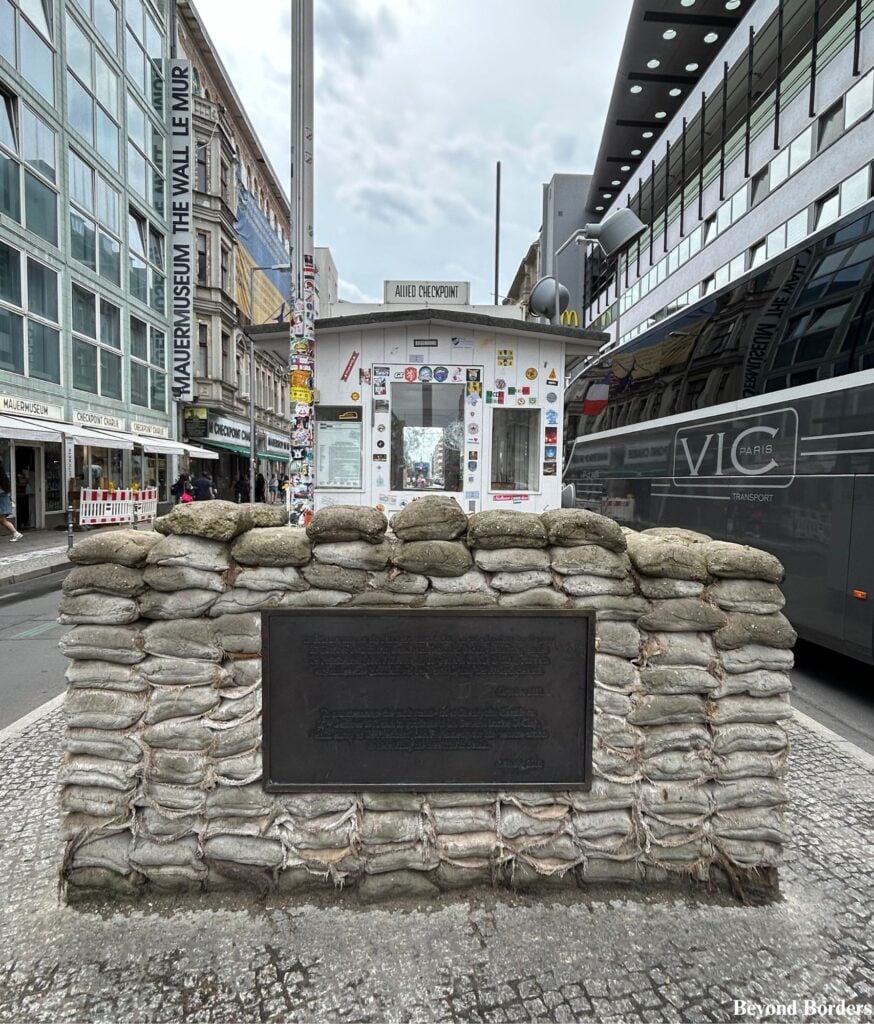
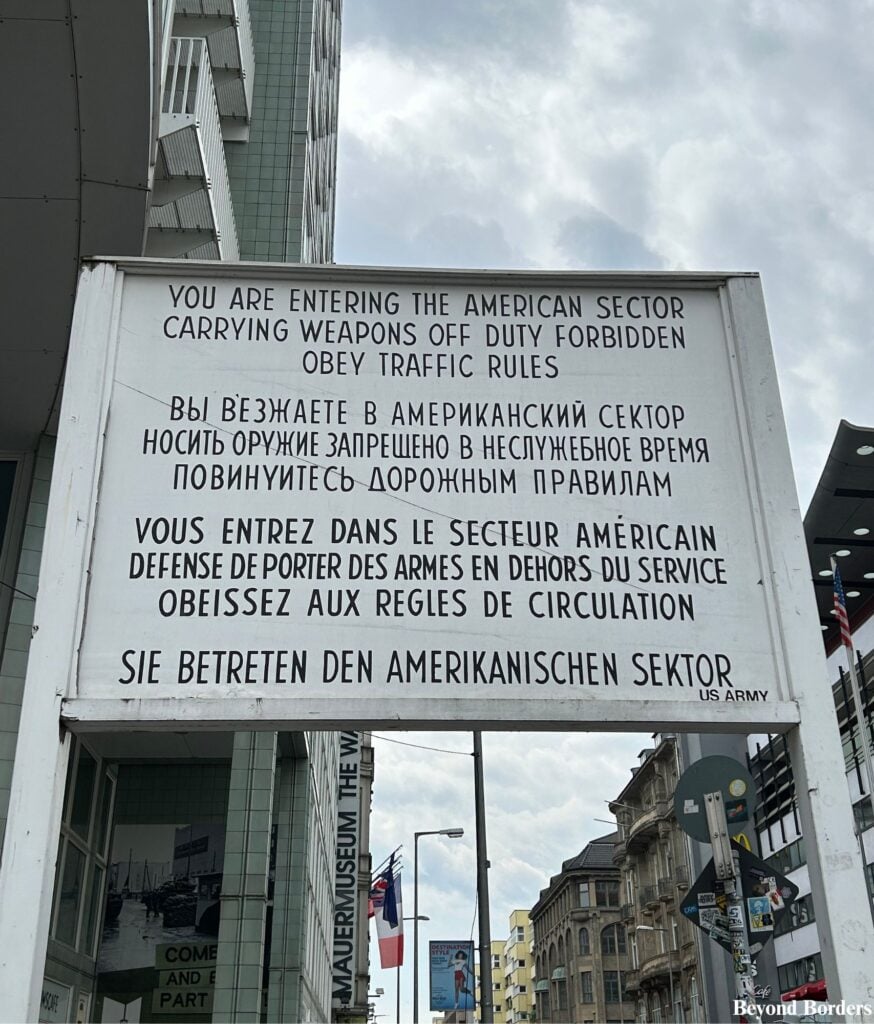
Option 2: A Taste of Local Life at Körnerpark
How to get here: Walk 10 minutes from Teras restaurant to the Stadtmitte station: Head east on Anton-Wilhelm-Amo-Str. toward Wilhelmstraße. Then, make a right onto Mauerstraße and a left onto Anton-Wilhelm-Amo-Street. Take the U6 train to Mehringdamm station, and transfer to the U7 train to U Rudow. Take this train to Neukölln.
After leaving Neukölln station, head west on Saalestraße toward Karl-Marx-Straße and make a right onto Karl-Marx-Straße. Make a left onto Kirchhofstraße and continue onto Schierker Street. Then, make right onto Wittmannsdorfer Street, and the park will be on your left.
This entire journey will take approximately 30-35 minutes.
If you’re looking for a peaceful escape from the tourist crowds, take the U-Bahn to the charming neighborhood of Neukölln to walk around Körnerpark! This park is a beautiful, hidden gem in a Neo-Baroque style, featuring a stunning sunken garden, intricate fountains, and carefully manicured flowerbeds.
The unique layout makes it feel like a secret garden nestled away in the city. At the far end of the park, you’ll find a grand orangery, which often hosts free art exhibitions and concerts, especially in the summer. It’s the perfect place for a relaxing stroll, a coffee at the cafe, and a chance to see how locals truly enjoy their city.
Note: Visiting Körnerpark will add a significant amount of time to the day, not just the time in the park, but also the travel time to get there and then back to Berlin Hbf. This is a trade-off: more sightseeing versus a more relaxed pace.
Late Afternoon: Take the Train Back to Berlin Hbf
Allocate at least an hour for the return journey to Berlin Hbf to take the 3-hour train ride back to Warnemünde/Rostock to avoid missing your ship.
How to get back to Berlin Hbf from Checkpoint Charlie and Typography of Terror
From the Typography of Terror, walk for 5 minutes to the Potsdamer Platz train station. To get there, make a left onto Niederkirchnerstraße, then a right onto Stresemannstraße. You will see the station on your left. Once you are at the station, take the Regional Express 3 (RE3) train to Berlin Hbf.
How to get back to Berlin Hbf from Körnerpark
Walk back to Neukölln station and take the S46 train (part of Berlin’s S-Bahn trains) to Südkreuz station. Transfer to the Regional Express 4 (RE4) train to get to Berlin Hbf.
Getting back to your ship from Berlin Hbf
To return to your cruise ship from Berlin Hbf, take a direct InterCity (IC) or Regional Express (RE) train to Rostock Hbf. Once you arrive at Rostock Hbf, if your ship is docked in Warnemünde, transfer to the S1 train to reach the Warnemünde train station.
Conclusions
The journey back to your ship offers the perfect opportunity to reflect on the incredible day you’ve had. You’ve walked through centuries of history, from the grandeur of the Brandenburg Gate to the solemnity of the Holocaust Memorial, and witnessed the stark divide of the Cold War at Checkpoint Charlie. Though a guided tour might have been the easier choice, your decision to navigate Berlin on your own has given you a deeper, more personal connection to the city. You didn’t just see the sights; you experienced the city like a local. With a little preparation and a sense of adventure, you can truly experience the heart of a city on your own terms.

